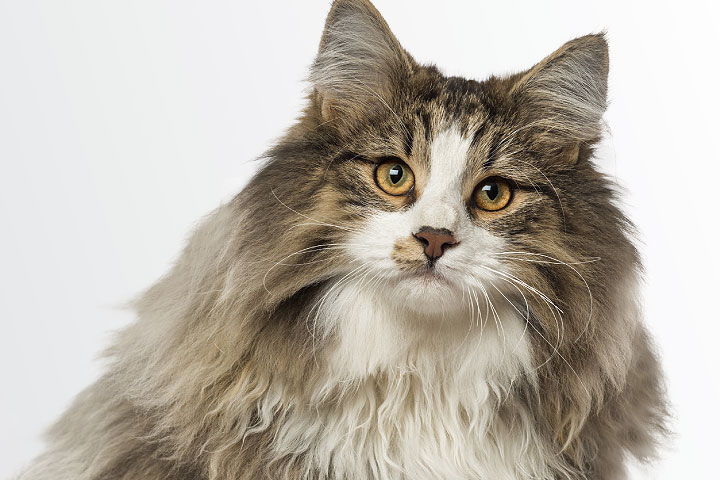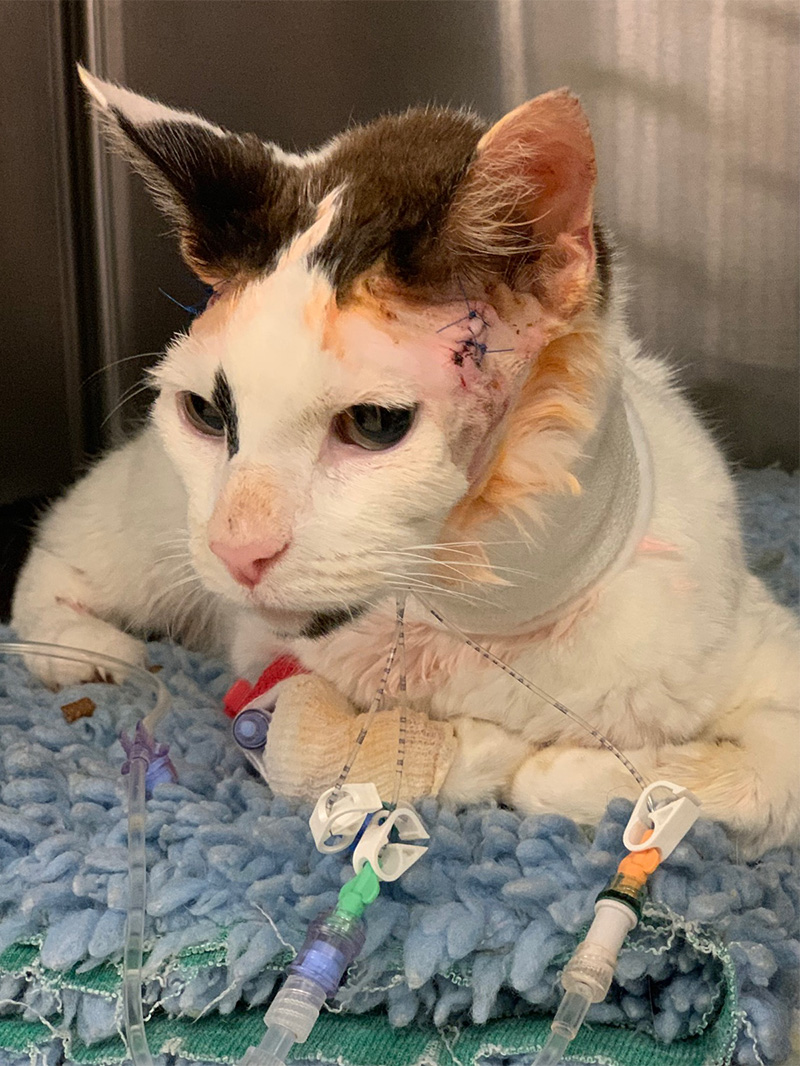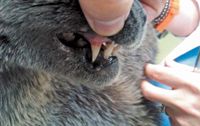acromegaly in cats prognosis
The signs to watch out for could include the following. Clinical challenges There is no single.

Vetgrad 10 Minute Top Up The Website For Vets
Other clinical signs due to this disease are.

. Sometimes owners will. Diagnosing feline acromegaly starts with a clinical suspicion based on a thorough history signalment and clinical signs. No single test for the diagnosis of feline acromegaly exists.
Acromegaly in Cats Causes. Feline acromegaly is most commonly caused by a functional pituitary tumor. Definitive diagnosis can be difficult because of the gradual disease onset subtle clinical signs unavailability of relev.
Acromegaly is a relatively rare condition caused by excessive hormone production in the brain or in mammary gland breast tissue. Acromegaly is most commonly seen in older 10 years old neutered male cats that have insulin-resistant diabetes mellitus. Mild cardiac disease can be managed with diuretics and vasodilators.
Find details on Acromegaly in cats including diagnosis and symptoms pathogenesis prevention treatment prognosis and more. Insulin resistance is generally controlled satisfactorily by using large doses of insulin divided into several daily doses. Hospitals Are Open Evenings Weekends Inside Your Local Petco.
Feline acromegaly has its origin in an adeno-hypophyseal lesion or an adenoma responsible for deregulation in the production of GH the growth hormone. Most die of complications eg congestive heart failure Heart. Acromegaly Cushings Disease and Feline Diabetes.
An increased need to use the litter tray. Enlarged bones in the feet skull face and jaw with increased space between the teeth. Acromegaly in cats is a condition in cats caused by excessive growth hormone in the body which is usually secondary to a pituitary tumor explains Dr.
Acromegaly should be considered in any diabetic cat with insulin resistance. Usually acromegaly is detected through the presence of other diseases. The longterm prognosis is relatively poor however and most cats die of.
1 a subpopulation of these 59 cats was submitted for further tests in order to conclusively establish a diagnosis. A common finding in cats with acromegaly is uncontrolled diabetes therefore symptoms associated with diabetes may be observed. Acromegaly in cats causes multiple complications.
Ad Partnering With You To Keep Your Cat Healthy Happy. Print off the owner factsheet on Acromegaly in cats Acromegaly in cats to give to your client. These may include polyuriapolydipsia increased drinking and urination as well as an increased appetite.
Acromegaly in Cats Symptoms. It is a somewhat rare condition which occurs when the cats pituitary gland located at the base of the brain grows a. Pasireotide for the Medical Management of Feline Hypersomatotropism Why vets are often missing the cause of Feline Diabetes.
Increase hunger and appetite. These often include unusual growths in the cats face abdominal enlargement and cardiomyopathy or heart disease. Weight loss in cats.
One of the first signs or symptoms of Acromegaly is difficult to control diabetes and insulin resistance leading to very or even extremely high doses of insulin being. Specialists confirm the definitive diagnosis through imaging and by measuring the levels of certain hormones in the blood. The symptoms of acromegaly in cats are generated both by the effects of GH and by the compression of the tumor in the brain.
Congestive heart failure renal failure Kidney. Feline acromegaly has the same origin as in other species except dogs. Characteristic effects of excessive growth hormone secretion include the development of diabetes mellitus and growth of the acral segments of the body jaw extremities skull etc.
In this pathology a characteristic symptom is the development of type II diabetes mellitus due to hormone-induced insulin resistance. Computerized tomography disclosed a mass in the region of the pituitary gland and hypothalamus in five of the six cats in which it was. In this case it may result from insulin resistance in the treatment of diabetes.
This tends to increase in size creating problems even at. This is true for acromegaly in other species as. Chronic kidney disease neurological signs or euthanazed due to painful polyarthropathy.
Feline acromegaly is caused by a pituitary adenoma that secretes excessive amounts of growth hormone. Many of the abnormalities noted in the complete blood counts serum chemistry profiles and urinalyses of affected cats reflect concurrent diabetes mellitus. Cat Diseases diagnosis Cat Diseases radiotherapy.
The keys to diagnosing Feline Acromegaly. An anterior pituitary lesion or an adenoma responsible for the dysregulation in the production of GH the growth hormone. Common symptoms associated with insulin resistance include weight loss despite a good appetite and increased thirst and urination.
A conservative or definitive approach can be chosen alongside addressing acromegaly-associated complications. Excessive growth hormone in cats is also called acromegaly or hypersomatotropism. The short-term prognosis in cats with untreated acromegaly is fair to good.
Symptoms Associated with the Condition. Diagnosis of acromegaly in cats. Feline acromegaly has the same origin as in other species except in the case of the dog -.
Get Convenient Vet Care. The primary goal of therapy is to achieve a good quality of life through combating the primary disease process andor secondary complications and ideally both. The definitive diagnosis is confirmed by imaging and checking the blood level of certain hormones.
Excessive production of a hormone. Long thought to be quite rare in cats there is increasing understanding that Acromegaly or Hypersomatotropism is more prevalent than thought. Acromegaly in cats is a disease that mainly affects elderly cats average age 10 years a predisposition in any particular breed has not been ascertained but we know that male subjects with poorly balanced diabetes suffer more.
Survival time 8-30 months. The definitive diagnosis is confirmed by imaging and blood levels of certain hormones. Acromegaly is characterized by chronic excessive growth hormone GH secretion by the pituitary gland.
Learn to recognize the symptoms of this pathology they could be subtle and act too late. Other signs that acromegaly may be present include a broadened face growing paws and a protruding jaw or growing lengthening teeth and gums. Once acromegaly is suspected further investigation is warranted in order to make a diagnosis however definitive diagnosis can sometimes prove a challenge to veterinarians.
However cats of any age or sex can develop acromegaly. Book A Vet Appointment Now. Acromegaly in cats is mainly caused by the presence of a pituitary adenoma that is a non-malignant but productive tumor responsible for the overproduction of growth hormone.
When cats develop acromegaly they can sometimes show specific signs of there being something wrong with them or their symptoms come on more progressively.

Acromegaly In Dogs And Cats Sciencedirect
Pharmacological Treatment With Cabergoline In Three Cats With Acromegaly

Diagnosis Feline Acromegaly Tufts Catnip

Pdf Acromegaly In A Non Diabetic Cat

Update On Feline Acromegaly Niessen 2013 In Practice Wiley Online Library

Insulin Dependent Diabetic Cat Veterinary Teaching Hospital Washington State University

Acromegaly In Cats The Veterinary Nurse

The Management Of Feline Hypersomatotropism Hs Acromegaly

Acromegaly In Cats The Veterinary Nurse

Acromegaly In Cats The Veterinary Nurse

Acromegaly In Cats The Veterinary Nurse

Acromegaly In Cats Symptoms Diagnosis And Treatment

Pioneering Hypophysectomy Treatment Reaches 100 Case Milestone

Tumors Of The Endocrine System Veterian Key



